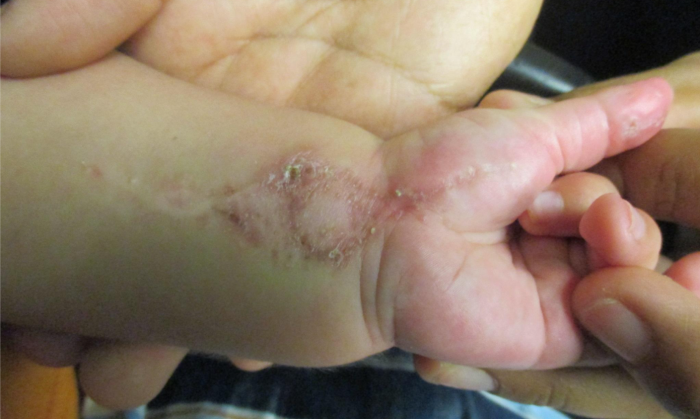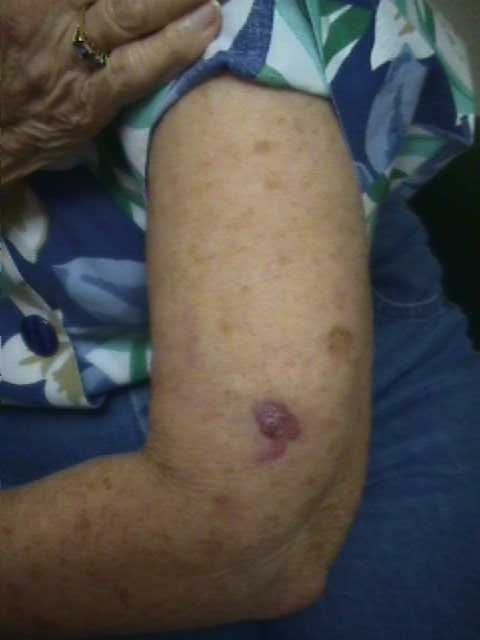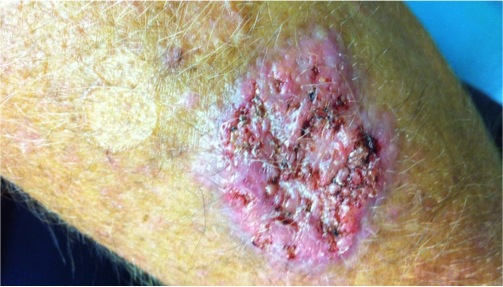Presenter: Jeffrey Harbold, DO, Carlos A. Rivera MD, Rick Lin, DO
Dermatology Program: South Texas Dermatology Residency Program, Bay Area Corpus Christi Medical Center
Program Director: Rick Lin, DO MPH
Submitted on: April 5, 2019
CHIEF COMPLAINT: ¨My son has a rare lesion on his left arm”
CLINICAL HISTORY: A 9-month-old Hispanic male with an evolving asymptomatic linear atrophic plaque on the flexor surface of the left wrist extending to the left upper arm. The patient’s Mother reports the presence of lesion at birth. She also reports that the lesions have progressed in a linear pattern towards the proximal arm. The patient has a history of pyloric stenosis s/p pylorectomy, macrocephaly, and patent foramen ovale/peripheral pulmonic stenosis(PFO/PPS). No significant dermatological family history was reported, including history of skin cancer. At 5 months of age, the patient underwent a MRI Brian for the history of macrocephaly which demonstrated enlargement of the subarachnoid spaces. Echocardiogram was performed during infancy for the history of PFO/PPS that was otherwise normal.
PHYSICAL EXAM:
The patient presents with a linear atrophic plaque on the flexor surface of the left wrist extending to the left upper arm. In addition, the patient presents with cleft lip with intact palate, craniomegaly with frontal bossing, an extranumerary digit of the right foot, and plantar pitting.

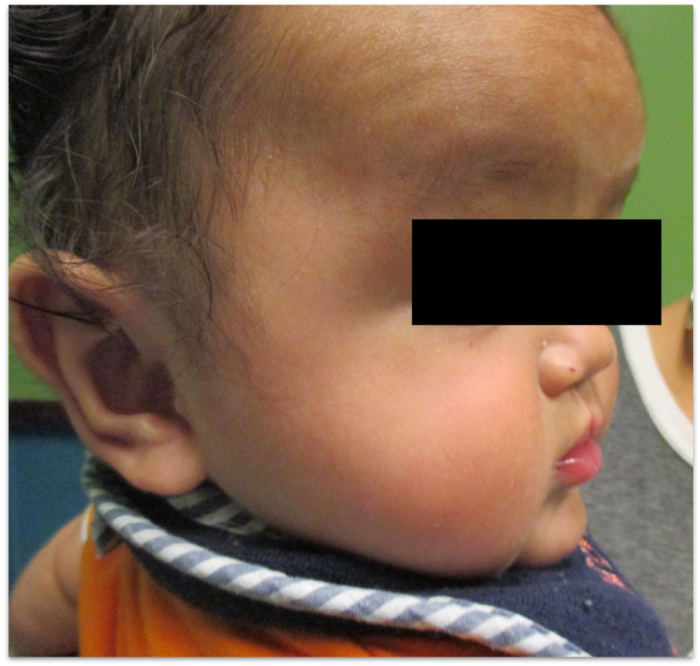
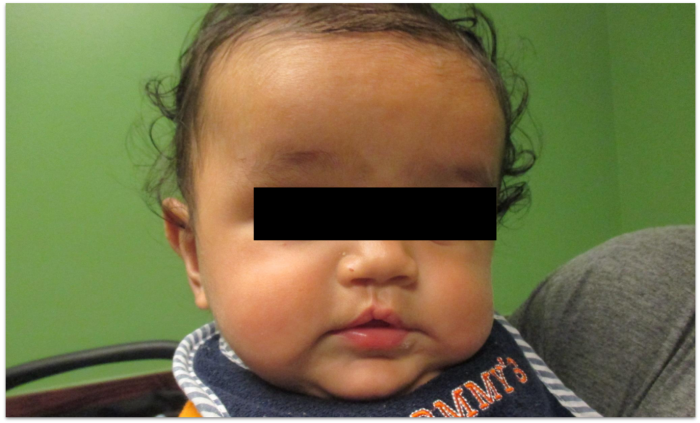
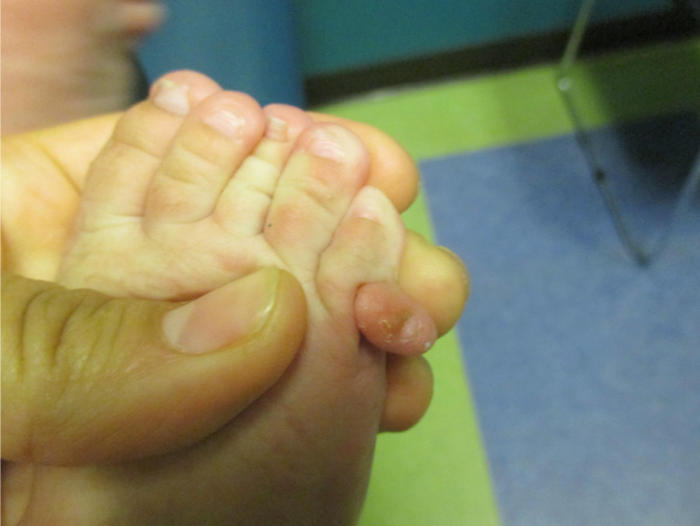
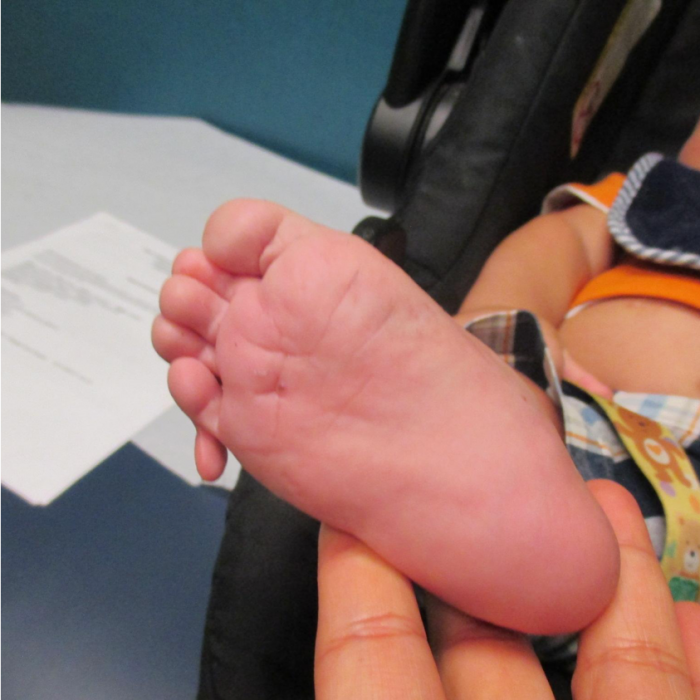
LABORATORY TESTS: N/A
DERMATOHISTOPATHOLOGY:
A 4mm punch biopsy was obtained. Histology findings were consistent with a basaloid neoplasm. Histology also demonstrated peripheral palisading with stromal retraction and formation of artificial clefts. No evidence of solar elastosis in the reticular dermis was noted.
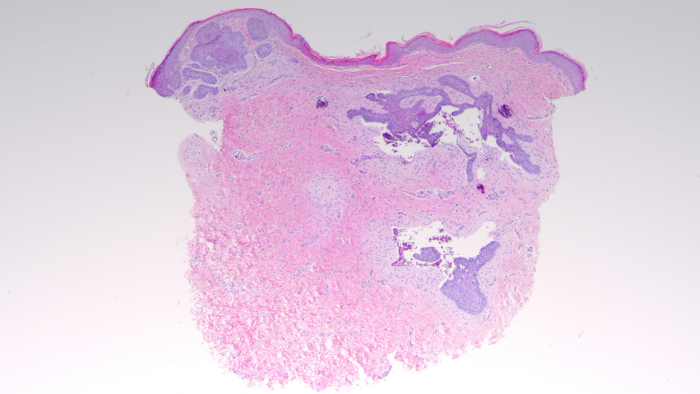
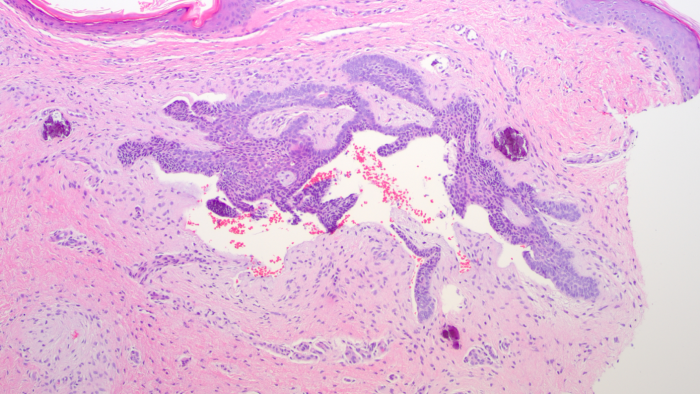
DIFFERENTIAL DIAGNOSIS:
1. Rombo Syndrome
2. Gorlin Syndrome
3. Bazex syndrome
4. Unilateral Nevoid Basal Cell Carcinoma

